Ugh, what’s that smell? Yup, it’s stink bug season again! When fall time arrives, stink bugs invade our homes, making their presence known on our walls, shower curtains, and all the indoor spaces we’d rather not share with these smelly pests.
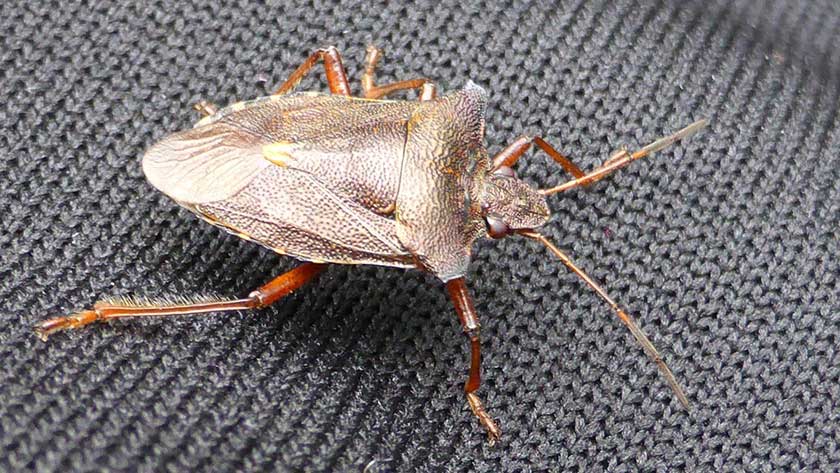
In some homes, the appearance of stink bugs, especially the brown marmorated stink bug, has become an annual nuisance. But, there are a few proactive steps you can do to remove stink bugs from your property and ensure infestations don’t become an annual event.
In this guide we will provide a little background on stink bugs, demonstrate how to get rid of stink bugs for good. We will also fill you in on some of the best ways to prevent stink bugs from getting into your home. First, let’s dive into some information about these annoying, yet fascinating creatures.
Here are the Best Ways to Get Rid of Stink Bugs
If you are reading this article, you most likely have an infestation and have come here to find a solution to a very stinky problem. While some homeowners may find one or two stink bugs in their homes each fall or winter, others may be inundated with swarms of these obnoxious creatures. Therefore, we will detail several of the most effective ways to eliminate existing infestations, as well as how to prevent infestations from reoccurring in the future.
But, be forewarned that completely eliminating stink bugs from your home and property can be quite the challenge. We recommend trying the methods presented in this article. If they don’t completely eliminate your stink bug problem, you can then call in the professionals.
1. Stink Bug Killer Aerosol Spray
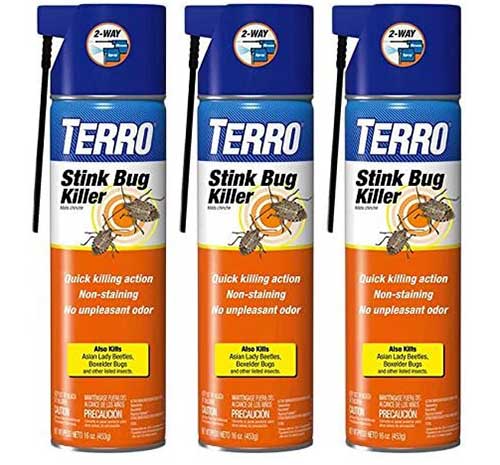
Terro Stink Bug Killer can be used around windows, doors, corners, and other popular points of entry. In a day or two, you should see a number of dead stink bugs around the home as well as a noticeable drop in the number of living stink bugs lining your walls. With this product, you should have a stink bug-free home for a number of months to come.
If you’re looking for a great indoor spray insecticide, we recommend the Stink Bug Killer aerosol spray made by Torro, the famous garden and pest control brand.
If you’re wondering, “But, why are there stink bugs in my home in the first place?” Keep reading to find out!
Unlike house flies, wasps, cockroaches, and other critters we typically identify as “pests,” stink bugs are fortunately slow, docile, and do not pose much of a health risk to humans and pets (unless you’re also counting “mental health” — stink bugs can make homeowners quite nuts, especially when they congregate in the shower).
2. Stink Bug Killer Spray
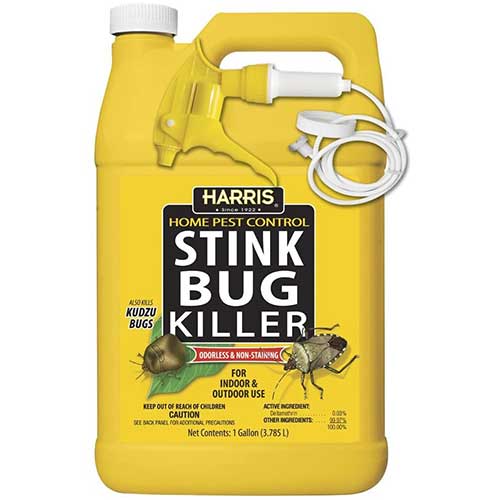
Harris Stink Bug Killer Spray is for indoor and outdoor use. It is odorless and non-staining. The extendable spray handle attaches to the 1-gallon container to allow the liquid to be sprayed. The product is registered with the environmental protection agency for indoor use. It kills the stink bugs when the liquid dries and continues to work in the sprayed area for weeks after the initial application.
3. Buggslayer Multipurpose Insect Killer
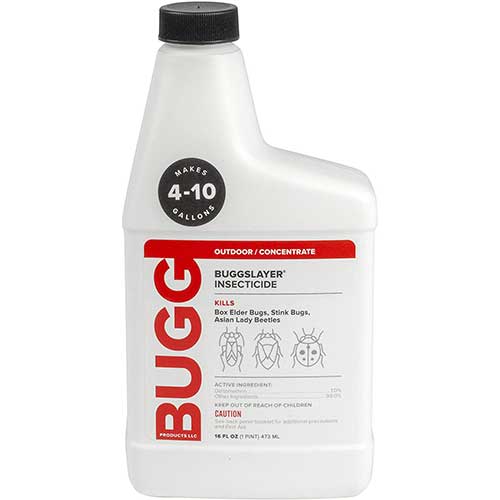
Buggslater Multipurpose Insect Killer allows you to limit populations of over 50 types of pests. Keeping stink bugs away from your lawn will be one of the best methods to keep them out of your home!
Powder-type insecticides that are spread along floor edges may kill some stink bugs within the walls of your home, but decaying stink bug corpses can also act as a lure, bringing in unwanted pests such as carpet beetles (which can be far more destructive than stink bugs themselves).
Instead of looking for indoor insecticides, try a lawn treatment such as Buggslayer Outdoor Insecticide.
Related Article: 9 Best Ways to Get Rid of Spiders
4. Vacuum Up Stink Bugs
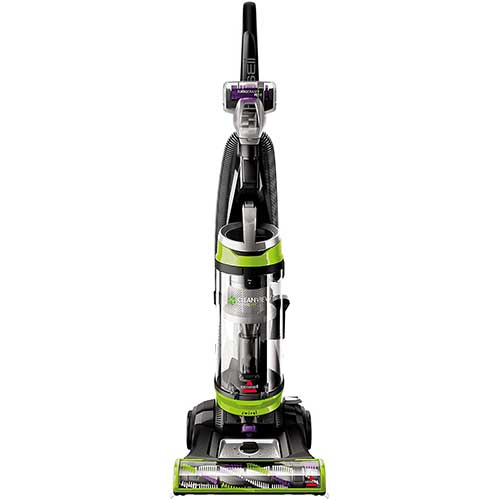
The ”suck-a-bug” method. For areas where there are an ”Alfred Hitchcock level” of stink bugs, some have taken to a rather extreme measure — sucking them up off the walls using vacuums dedicated to the purpose. This means going around the home and using either a vacuum’s extension wand or a small handheld vacuum to remove the bugs in mass.
If you plan to use this approach, keep a vacuum that is specifically dedicated to the task of sucking up stink bugs, then place it an area that isn’t frequented often, such as the garage, workshop, or shed. A bagless vacuum is nice so that you can quickly dispose of the stink bugs.
Alternatively, you could wrap some hose around the nozzle of the wand and then simply drop the captured stink bugs into a bucket with soapy water.
Because stink bugs are slow, manual methods of control often work best over applying indoor and outdoor insecticides, traps, and other control tactics. Stink bugs are in fact so slow that you can easily scoop one up with your hands and flush it down the toilet. Or, toss it outdoors and let the winter freeze wisp the stink bug away to stink bug heaven. While they likely will not release their noxious gas while in your hand, you may want to use a rubber glove or plastic sack, so you don’t have to make direct contact. Why take the risk, right?
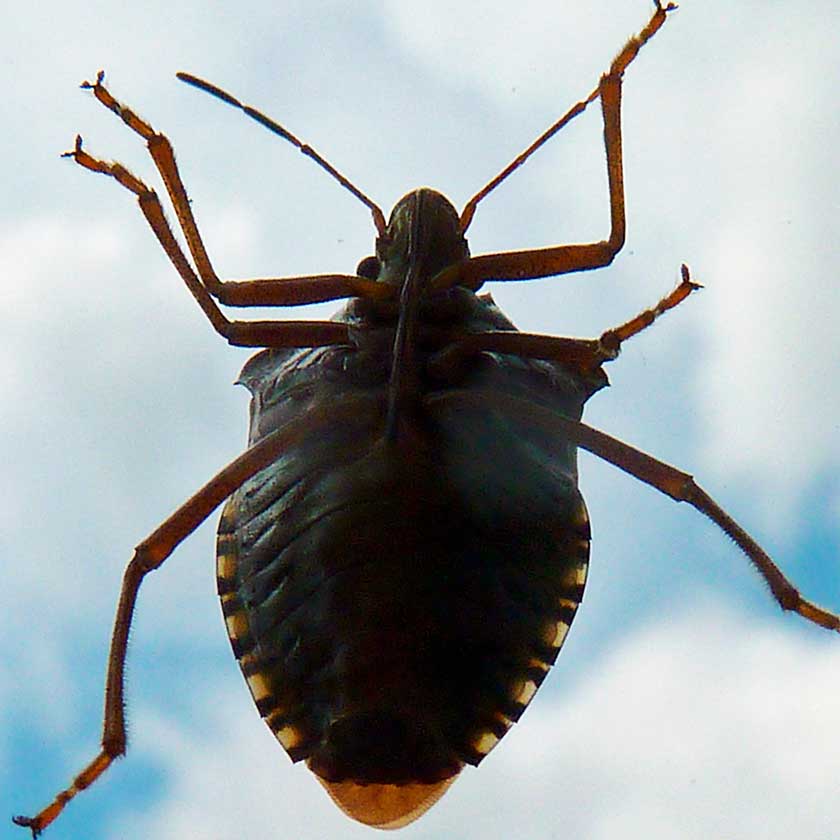
5. Bottle-a-bug Method
The ”bottle-a-bug” method. This is one method we don’t recommend because it is time-consuming, but if you just have a few stink bugs in your home every year, then it may be the best option for you. Keep a soda bottle around for the sole purpose of flicking stink bugs into the bottle portion using the cap. You can place some water or salt in the bottom of the bottle to either dry out or drown the stink bug. Or, as one user suggests, you can simply keep the bottle outdoors to let the stink bugs freeze to death.
The ”bubbly demise” method. When agitated, stink bugs have a tendency to just drop. So, one of the most effective ways to dispatch one or several stink bugs is to tap them off the walls and let them drop into a mop bucket filled with a soapy solution. To create the perfect setup, simply fill a mop bucket a quarter of the way with water, then add a teaspoon or two of dish soap. The dish soap doesn’t allow surface tension to form, and the slick soapiness of the solution makes it incredibly difficult for the stink bugs to climb their way out of the bucket. Scented dish soaps also help to cover up the smell.
DIY Methods
We also have some recommendations for those seeking a DIY approach to keeping stink bugs out of their home. We haven’t had a chance to try all these methods, but these are some methods we’ve heard repeated over the years. So, give them a shot!
Rub a dryer sheet on your windows. Anecdotal evidence suggests that rubbing your window screens with dryer sheets helps to deter stink bugs from getting in their homes. Some have even declared this method has a 75-85% success rate!
How does this method work? No one really knows. Stink bugs could be turned off by the scent of the dryer sheets (oh, the irony), or they may be turned away by the feel of the dryer sheet film on their feet.
6. Catch Stink Bugs in Damp Towel
Catch them with a damp towel. In the late fall and early winter, when the ambient humidity drops in many areas of the country, stink bugs will congregate around areas with a moderate degree of humidity or moisture. As a preventative measure, some have suggested hanging a dampened towel outdoors overnight. You can either toss it over a rail or chair; the location doesn’t seem to matter. The next morning, the chair will supposedly be blanketed in stink bugs. Simply take a towel and dispatch these winged stink bombs by dropping the towel in a soapy solution.
Try the “Vito Corleone method.” Some have suggested that squishing several stink bugs outdoors will send a message to others not to come near the property. Apparently, the scent of fellow stink bugs in distress sends a message to stay away.
Related Article: 7 Best Ways to Get Rid of Fire Ants
7. Prevent Stink Bugs From Getting Inside
Seal up the cracks. One of the best ways to prevent stink bugs from getting into your home is to seal up cracks in your foundation. You should also look for drafts around your doors or windows. Not only do drafty gaps mean there is enough space for a stink bug to enter, but it also advertises to pests that it’s quite warm and cozy inside your home.
Check the weather-stripping. If you live in an older home, you may be surprised how many of your doors do not have adequate weather-stripping. So, check your door jambs and underneath your outside-leading doors to ensure weather-stripping is in place.
Examine attic and screen vents. Most adult stink bugs cannot enter through the mesh of attic, chimney, and crawlspace vents. But, if your vents are damaged or bent in any way, a myriad number of pests can simply waltz right into your home.
Stop Attracting Stink Bugs
Cut the lights. Stink bugs, like many flying insects, are attracted to light since light to insects equals warmth (and possibly some food). Before you head off to bed, turn off porch lights and ensure your window blinds adequately block light from escaping outside.
Ventilate damp areas. Hailing from Southeast Asia, many stink bugs love moist, humid areas. So, if you have a garage, attic, crawl space, or bathroom that does not have a ventilation fan installed, or does not receive adequate airflow, you could make this a priority on your home’s to-do list.
Eliminate food sources. If you have a habit of leaving crumbs on the counter or kitchen table, you may be feeding the same problem you’re trying to prevent. Try to keep all food items in airtight containers. If you enjoy fresh fruits, try to keep these in a secured pantry. It’s worth pointing out that stink bugs will eat just about anything.
Related Article: 12 Best Ways to Get Rid of Carpet Beetles
Information About Stink Bugs
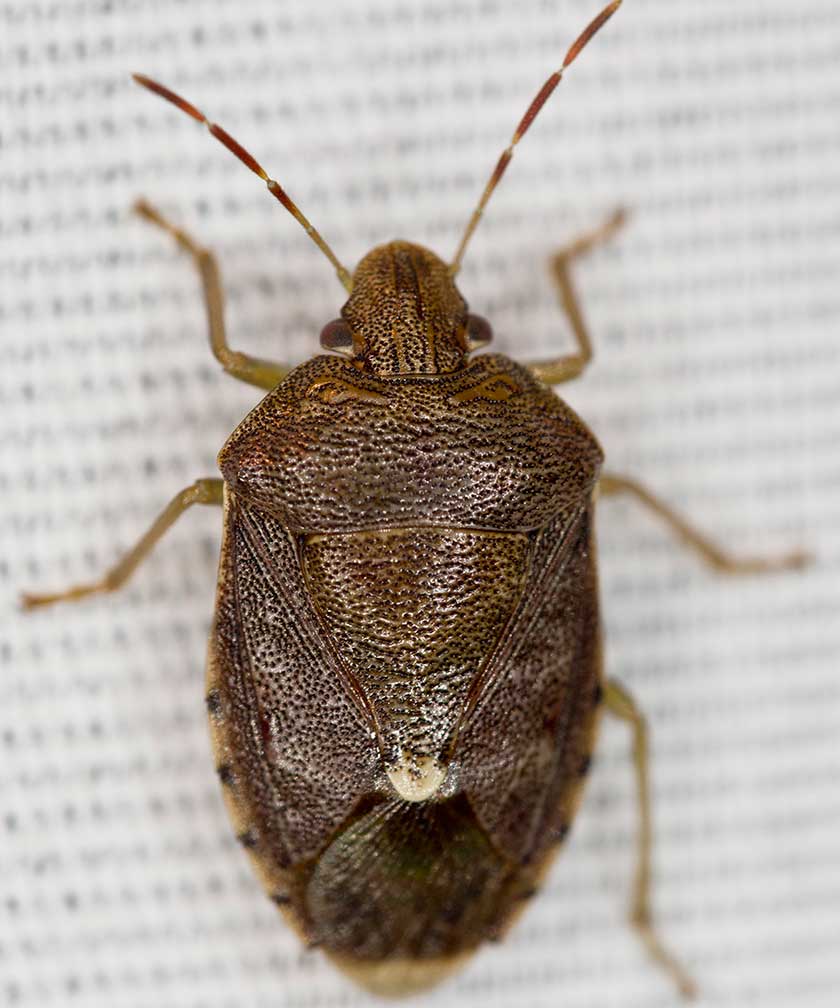
Stink bugs come in a variety of shapes, sizes, and colors. Some are native to the country while others are invasive pests that have only arrived in the past few decades.
Most stink bugs feature an abdomen that is either shaped like a shield or an oval. They are typically large, but most of their size can be attributed to the fact that their legs jut out directly from their sides.
There are a number of species of stink bugs that make their presence known around the world. Some are green, some are brown, but all are notable for the smell they give off when they feel threatened.
Stink bugs are quite mobile while in flight, but they lack a bit of the get-up-and-go when it comes to fleeing from potential predators. This is great for humans looking to capture these nasty critters, but not so great for stink bugs.
Controlling Stink Bug Populations on Your Property
As mentioned earlier, there are a few ways to manage stink bugs on your property using broadcast sprays and other control methods. These are available online from Amazon, but your local retailer may also have these products in stock. There are several other tasks you can do on your property to limit the number of stink bugs that make it into your home.
If you have thistles, removing these will be a good way to keep their populations down. Also, stink bugs like to hatch their young where there is some dampness, such as decaying logs, sticks, or high weed growth. If you have a stack of logs, purchase an outdoor log rack to keep the logs off the ground. Also, the logs should be kept as far away from the property as possible.
Perimeter insecticide treatments can be useful in keeping stink bugs out of your home but making sure all points of entry are sealed up tight should be your primary method of blocking access.
Conclusion About Stink Bugs
As you seek to find ways to keep stink bugs to an absolute minimum on your property (and certainly within your home), it’s important to remember that one of the best ways to achieve this is by taking preventive measures, such as inspecting your home’s exterior for any cracks. If you have any tears in your down screens, these should be repaired or replaced.
Each year as fall time nears, give your yard a good looking over. Be sure to remove any clutter which could trap moisture within the soil or provide a safe haven for pests such as stink bugs. Be sure to keep your lawn trimmed neat and ensure your gutters and downspouts are properly shedding water away from your property.
If you continually have an issue with stink bugs invading your home each year, it may be worth your while to have a professional come out and take a look. If anything, they will be able to identify areas on your home’s exterior that could use some fixing up in order to keep out pests.
Frequently Asked Questions
Do stink bugs bite?
While stink bugs have a sharp proboscis which can pierce the root and flesh of fruits, they are not known to bite or harm humans or pets in any way.
The shape of their mouths is designed in such a way that it would be fairly difficult for them to puncture human skin. And, after all, one whiff of a stink bug’s noxious secretions is all that’s needed to reveal their most powerful defense mechanism — that stinky smell.
Why are there stink bugs in my home?
Stink bugs, like humans, prefer to stay in warm, slightly humid areas when it gets cold outside. Therefore, your home with all its warmth and plentiful food options makes the perfect winter vacation home for these odorous pests.
One of the most famous home-crashers in the pentatomidae family is the brown marmorated stink bug. This seasonal offender has a shield-shaped abdomen and brown-gray coloration.
This stink bug variety was accidentally introduced to the country in the late 1990s. During summertime, the brown marmorated stink bug spends much of its time outdoors, where it is warm and there is plenty of vegetation to feed upon. But, when late fall rolls around, these pests will often find a warmer, more humid spot to hole up for the winter. This often means they will seek out cracks in your foundation or gaps in your windows or doors in order to gain access to your home.
Native to Asia, the brown marmorated stink bug loves warm, humid areas. This is why you will often find these stinkers clinging to your shower curtain. This is actually a convenient spot to catch them as you can often just catch them and flush them down the toilet without having to smell them.
They are slow and docile, which might cause you some guilt after you’ve disposed of them so harshly. But, remember: These pests are a huge threat to agriculture, causing millions of dollars in produce loss each year, driving up prices at the grocery store and harming the income of farmers.
Why do stink bugs stink?
A majority of insects in the Hemiptera order and Pentatomidae family are what we refer to as stink bugs. And, stink they do — especially when squished!
Isn’t it fascinating that an entire family of insects has earned a moniker that was seemingly chosen by a grade-schooler? Yet, “stink bug” is fairly descriptive.
Stink bugs earned their unshakable nickname from the noxious odor they give off when they are squished, tormented, or threatened in any way. This is a defense mechanism that is highly effective in making potential predators think twice about feeding on these stinky insects.
Stink bugs produce their signature odors in the abdomen, where two chemical compounds (trans-2-octenal and trans-2-decenal) are mixed together to produce the pungent gas. The smell of stink bugs has been compared to rotten onions, hot garbage, coriander, cilantro — or, a mixture of all of the above.
Ironically, the same chemical compounds found in stink bugs’ scent-producing glands are also used as food additives to keep pests away from certain types of produce, which sounds crazy until you realize that the same chemical compound occurs naturally in cilantro.
How long do stink bugs stink?
The stink bug smell can linger for hours. It can even be difficult to wash the smell off your hands, clothes, walls, and furniture, which means swatting or squashing stink bugs is never the preferred way to eliminate these pests from your home.
Some stink bug species can actually spray this foul combination of chemicals a few inches to get it into the eyes and scent glands of predators.
Now that you know your nemesis, you’re probably wondering how to remove these foul-smelling wall-clingers from your home right? That’s exactly what this article is all about! Let’s explore the many effective and creative ways to get rid of stink bugs!
What do stink bugs eat?
Stink bugs appear to be especially fond of tangerines. But, they are also known to have a voracious appetite for all sorts of food items we humans hold near and dear. These include pistachios, apples, peaches, soybeans, oranges, pecans, and other popular agricultural products. We did say voracious, right? And stink bugs’ diets are not only limited to apples and oranges, but also cotton buds, green peppers, pecans, cowpeas, thistles, seeds, nuts, pecans, and the list goes on and on.
One family of stink bug, the dreaded Nezara viridula, is especially harmful to citrus growers. Sometimes called “southern green stink bugs,” this species loves feasting on lemons, oranges, limes, and other citrus fruits. (Anecdotally, stink bugs are not fans of grapefruit and will typically leave this particular citrus fruit alone.) When the stink bug punctures the skin of the fruit, it often makes the fruit prone to infection and rot, essentially making the fruit inedible and certainly not sellable.
The southern green stink bugs often hatch their young near citrus groves so when the summertime fare of cowpeas and thistles have dried up, they can simply move over to the citrus crops before the fruits have a chance to ripen.
Related Article: Best Bed Bug Killers
My name is Blane and I’m a life-long resident of Southeastern Louisiana. I’ve been working as Pest Control Technician and Inspector for about 1.5 years now.
I’ve worked in many other industries as well, including consulting, managing, as well as at the ground level in fields including Food Service, Corporate Automotive sales, and finance. Whether it be providing counsel, content, or hands-on support; my goal remains to add value to the lives of the people I serve.
If you have any questions regarding pest control, leave them below. I would be happy to help you out in any way I can.
